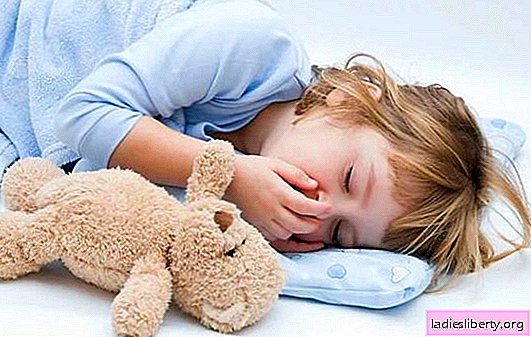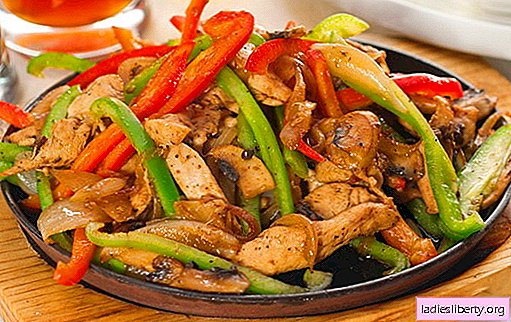
Food poisoning (toxic infection) is an acute infectious or toxic disease that develops after eating poor-quality food.
It is manifested by a number of symptoms - nausea, vomiting, diarrhea, intoxication. Food poisoning in children often occurs due to insufficient development of organs and systems at this age and periodic non-compliance with hygiene in the absence of control by adults.
Causes of Food Poisoning
The occurrence of food poisoning depends on the quality of the foods used, which, due to the characteristics of the child's body, lead to toxic infection.
Production and storage conditions
Under certain conditions, food poisoning of a child can cause any food product.
It happens:
• at the expired shelf life (the processes of decay and decomposition with the accumulation of toxins begin);
• in case of violation of technological standards (bacteria or toxins enter the cooking process);
• in case of ingestion of pathogenic microorganisms with food (dirty or poorly washed vegetables, fruits, eggshells).
Poisoning Products
Products that may lead to toxic infections include:
• dairy;
• canned;
• smoked;
• pastries and cakes with cream;
• eggs;
• mushrooms;
• exotic fruits and vegetables;
• the core of the peach and apricot kernels due to the prussic acid they contain.
Features of the development of the child's body
The high frequency of toxic infections in children compared with adults is explained by the characteristics of the child's body:
• enzyme system of the liver, which is not fully formed in childhood; it is involved in the neutralization of harmful substances that have fallen with food and their elimination;
• low acidity of gastric juice: its barrier role is lost when pathogenic microorganisms penetrate;
• the incompletely formed intestinal microflora leads to dysbiosis and reduces the protective function of the mucosa;
• low filtration function of the kidneys prevents the timely elimination of toxins in the urine.
Given the above factors, all toxicoinfection proceeds much harder in children than in adults under the same conditions. Turning to a specialist will help prevent the development of dehydration and other serious complications.
Treating a child's food poisoning at home
With food poisoning of a child up to a year, treatment at home is prohibited.
All children under the age of 3 years with poisoning of any severity should be hospitalized.
It is impossible to rinse the stomach or carry out other medical manipulations alone.
When the first signs of toxic infection appear, a child under 3 years old must immediately call an ambulance.
This is due to the high probability of developing fulminant dehydration, which is impossible to cope with at home.
Emergency activities
Before the arrival of the ambulance crew, the child needs to create complete rest at home and take the following measures:
• make sure that during vomiting food masses do not fall into the trachea, for this, lay the patient on his side;
• until the vomiting stops, do not feed the child;
• drink warm water with soda and salt (1 teaspoon of each ingredient in 1 liter of water) and try to rinse the stomach in this way, artificially inducing vomiting; for this purpose, gently press a finger on the root of the tongue (children above the age of 5 are allowed to do);
• give any sorbent (Enterosgel, Smecta, Polysorb, activated carbon).
Some contraindications
With food poisoning of the child, treatment at home is possible only with mild intoxication at the age of over 3 years. But even with a single diarrhea, you need to see a doctor. Antiemetic drugs are prohibited: a large amount of toxins is released with vomit, so vomiting is a kind of protective reaction.
Electrolytes
First of all, it is necessary to restore the electrolyte composition. For this purpose, every 10 minutes it is necessary to give 2 tablespoons of the finished saline solution:
• Regidron;
• Oralita;
• Trihydron;
• Reosolana;
• Hydrovita.
Any drug can be bought without a prescription in the form of a powder.
In the absence of the necessary solution, you can prepare it yourself. Soda, sugar and salt (1 teaspoon each) are added to 1 liter of water. Drinking should be frequent and fractional - this will help to avoid dehydration and the loss of important trace elements.
Sorbents
It is important to give the child a sorbent as soon as possible. It binds toxic substances and quickly removes them from the body. The sooner the drug was given, the higher the likelihood that the toxin will not enter the bloodstream in large quantities. If the sorbent is used in the form of tablets (activated or white coal), it must be crushed, added to water and given to a child to drink. When using any medication, you must adhere to the instructions and do not exceed the frequency of administration and the specified age dosage. Effective: Enterosgel, Smecta, Polysorb, Atoxil, activated carbon.
Probiotics
If you managed to stop vomiting, you can give funds that will restore the intestinal microflora, accelerate the elimination of toxins, reduce the manifestations of the disease and significantly shorten the recovery time.
Effective and proven probiotics include:
• Bifiform;
• Enterogermina;
• Linex.
Detoxification
In case of food poisoning of a child, treatment at home includes replenishment of the volume of lost fluid. For this purpose, it is necessary to give a large amount of drink. Used by:
• still water;
• weak sweet tea, possible with the addition of honey;
• rice broth or from rose hips;
• pharmacy solutions (Regidron, Oralit).
Everything that the child is given to drink should be in a warm form - so the liquid is absorbed faster in the digestive tract. The amount of fluid consumed is taken from the calculation: 200 ml of water per 1 kg of the child’s weight.
Diet food
With food poisoning of a child, treatment at home includes compulsory dieting. Until vomiting and diarrhea stop, it is impossible to feed the patient. Only after normalization of the stool, after a few hours, it is recommended to switch to a sparing diet. It is important that the child ate often (up to 8 times a day), but in small quantities and on demand: food should be given as desired, but not overfed. Food is served in grated or liquid form. Fresh bread, milk or fats are prohibited for 2 weeks.
Recommended:
• dairy products;
• crackers;
• liquid cereals on the water;
• mashed boiled meat;
• vegetable broths and soups - mashed potatoes.
For 3 weeks you can not eat sweets, fresh fruits and vegetables, juices, fatty and fried foods.
Folk recipes
In addition to the above measures that should be taken with food poisoning of a child, treatment at home allows the use of traditional medicine.
Cinnamon Broth: ½ teaspoon is poured with boiling water and infused for 15 minutes, cooled, given to the child during the day. It removes toxins well, relieves pain in the stomach.
1 teaspoon of seeds is poured with 1.5 cup of water, boiled for several minutes. After cooling, a spoonful of honey is added. During the day, toxins are removed from the body.
A good effect has a starch broth in proportion: 1 teaspoon per glass of water. It can be replaced with edible gelatin.
Can cook teas from ginger and nettle, infusions from mint and lemon balm. They have antimicrobial properties. Teas are made from an arbitrary number of components. Used as often as possible in an amount calculated on body weight.
Significantly improve the condition of decoctions and infusions of chamomile flowers and oak bark.
Treatment with alternative methods is time-tested and effective as part of complex therapy at home. All ingredients are sold in the pharmacy chain, they have a long shelf life, easy to prepare and use. But it is best to carefully monitor what the child eats and their compliance with hygiene rules, as well as the shelf life of products that are used for cooking. It’s better to prevent the occurrence of poisoning than to treat the child’s food poisoning at home later.











